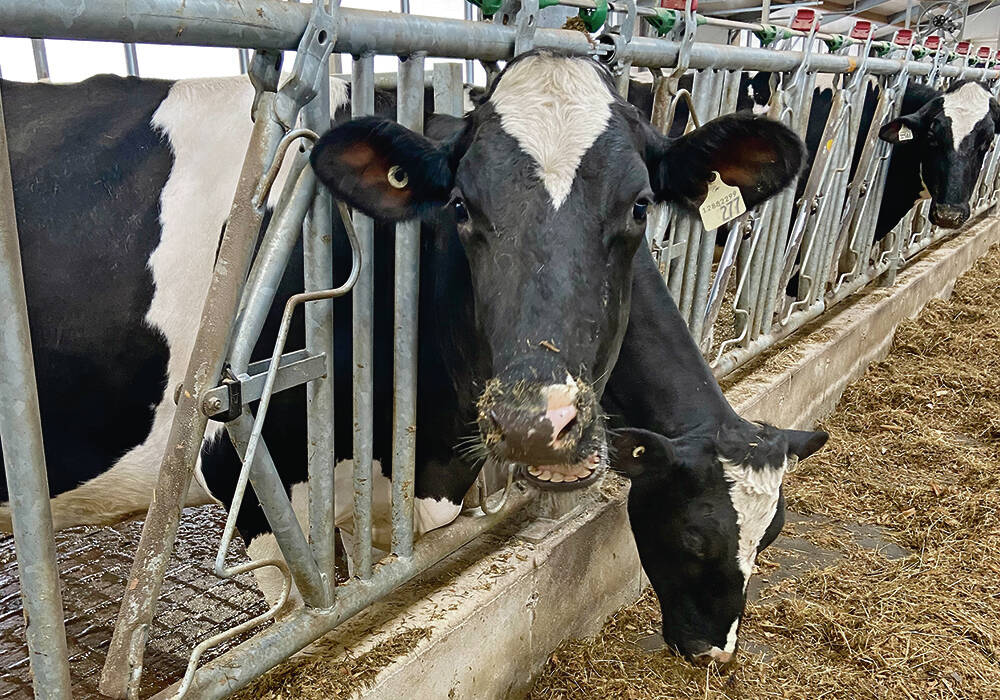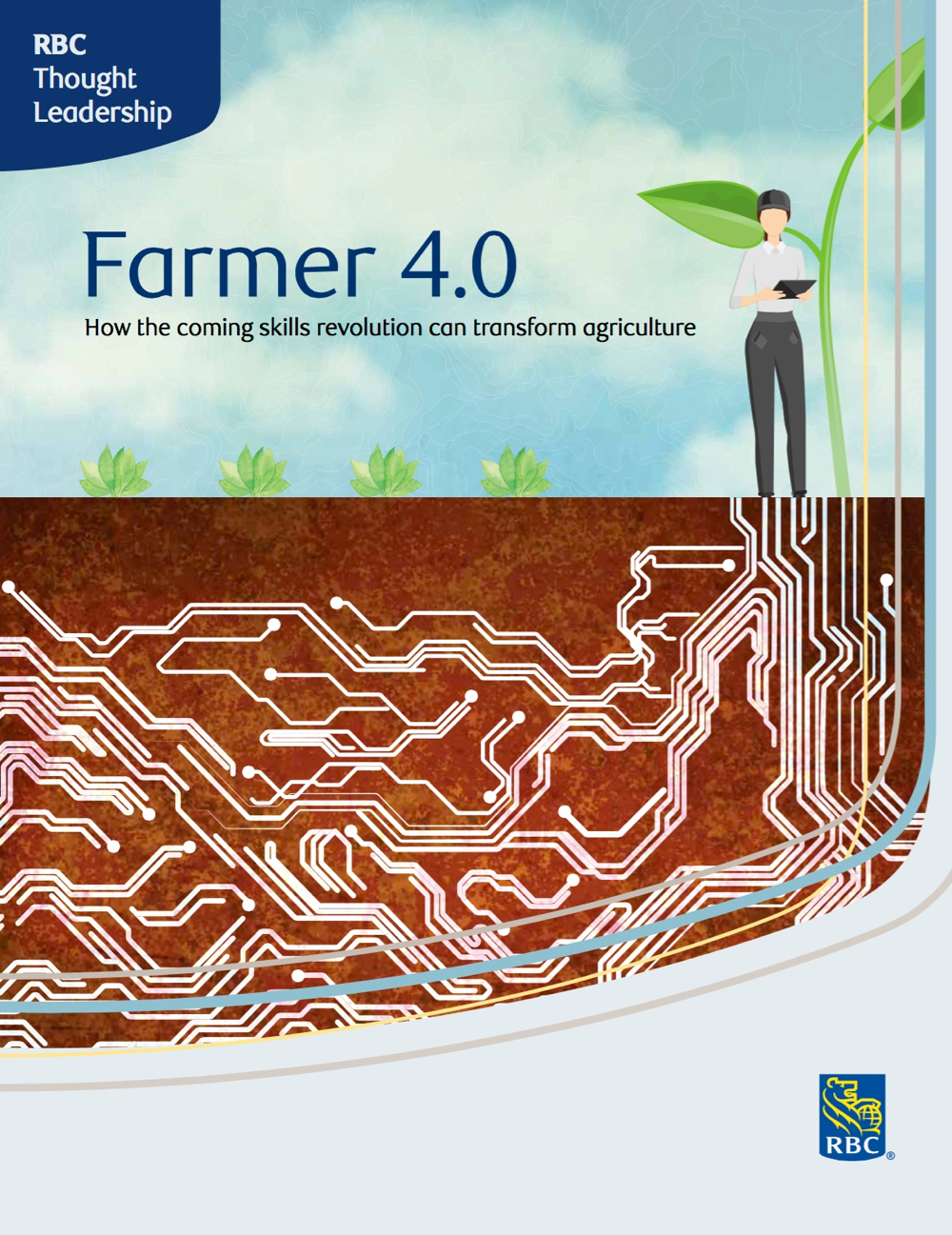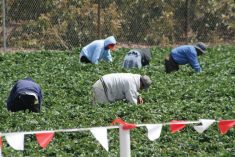Although no one can say how much devastation will be caused by COVID-19, experts in both disease outbreaks and economics all agree on one point — this crisis will pass.
And if the country’s biggest bank and the province’s leading ag colleges are right, the future will be bright.

“Technology is disrupting sectors across the country, including our own, and we think it’s going to not only disrupt agriculture but also create a historic opportunity that Canada’s got to seize on right now,” said John Stackhouse, senior vice-president at RBC and one of the authors of a bank study entitled Farmer 4.0.
“It’s time to invest in the skills and technology that we’re going to need for what I’ll describe as the fourth agricultural revolution, and ensure that Canada is a global leader in this.”
Stackhouse brought his bank’s vision — and its call for a new approach to ag education — to Alberta last month. In subsequent interviews, educators at both Olds College (a co-host of his presentation) and Lakeland College not only echoed his predictions but said their institutions are well along in their efforts to prepare for this future.
Read Also

Alberta Milk opens annual hospital fundraiser
Alberta Milk embarks on holiday season campaign to raise money for Alberta Children’s Hospital Foundation
It’s about people, not robots
Canada’s ag sector has changed at lightning speed over the past decade, and the pace of technological innovation has ramped up even further in the last three years, Stackhouse said.
But it’s nevertheless snuck up on most in the ag industry and government because it’s often difficult to keep in mind how quickly the changes have occurred.
“Just look at your phone and how that has changed your life in all sorts of ways,” said Stackhouse. “That’s what we see with technology in sector after sector after sector.”
The Farmer 4.0 study predicts there’s a coming tech revolution in agriculture but says the real disruption will happen in the workforce. Not only will tens of thousands of new workers soon be needed, they will be of a new breed, the study predicts.
“There’s going to be more jobs, and that’s always the case in technology revolutions,” said Stackhouse. “We like to say the robots are coming for our jobs, but in reality, there are going to be more jobs, not less. So our challenge is finding the right people with the right skills for those new jobs.
“The best way you can prepare for a technology revolution is in skills — ensuring that all of our people are ready to take advantage of these types of opportunities.”
But that doesn’t mean Canada should become a “nation of coders,” he added. Rather it will need people whose fundamental skills are in critical thinking, analyzing data, communication, and collaboration.
“The skills that are most in demand and growing in demand have nothing to do with technology,” said Stackhouse. “People call them soft skills, but they’re really human skills. And we need a generation that has those human skills.”
Change is underway
Educators in this province agree — and say they’re already focused on training this new generation of ag workers.
“We have been evolving in that direction for a while,” said Josie Van Lent, dean of agricultural sciences at Lakeland College. “Farms have been moving toward technology over the last seven to 10 years, and in the last three years, that movement’s been even greater. So we’re definitely moving there in our agricultural programming in a bigger way.”
Its student-managed farm is just one example of how the college is preparing for the coming skills revolution.
In 2017, the college built a new dairy learning centre with a focus on technology, such as robotic milking, automated feeding systems, barn environmental controls and data collection tools. But technology is only one piece of the equation. These operations rely just as heavily on the students’ soft skills.
“There’s lots of stuff in that barn that ensure our students are working in the most modern environment possible and really getting comfortable with technology,” said Geoff Brown, the school’s associate dean of agriculture sciences. “So on the student-managed farm, you’ve got technology that you’ve got to optimize, but in order to do that, you have to work in a team environment to get that done. That’s where a lot of those soft skills come from.”
And those are the abilities that are most in demand among employers, he added.
“The biggest thing that we hear at all our advisory committee meetings, without fail, is that critical thinking and problem-solving skills are really at the top of the list,” said Brown.
“If you look at where the skills gap is predicted to be in the future, it’s much less productivity based and much more knowledge based, and critical thinking skills are a big part of that.”
Like Lakeland, Olds College has been investing in hands-on use of new technology, including its new Smart Farm launched in 2018.

“We’ve been on a journey for probably 24 months now on how to integrate technology in our new programming and current programs as well,” said James Benkie, dean of the Werklund School of Agriculture Technology at Olds College.
“But even though the quote-unquote skills revolution continues to focus on technology, there’s also a lot of conversation about soft skills. That’s a massive skill set to teach.”
This fall, Olds plans to launch its first new programs in precision ag — a two-year diploma in precision agriculture (called ‘techgronomy’) and a one-year advanced certificate in agriculture technology integration. It’s also working on having a bachelor’s degree in digital agriculture as its first four-year degree offering.
“I think we’re going through a pretty significant shift right now, and I think something to be excited about is just the opportunities that we don’t yet know will exist,” said Benkie. “We see these new programs as the road map of what agriculture will be in the near future, so we’re excited about that and stepping up to support it.”
Investing in skills
Colleges and universities not only have to fundamentally change their ag programs today — but do it again and again as the ag-tech revolution grows and evolves, said Stackhouse.
But the goal should be unchanging: Be a world leader on this front.
“If we do that, the payoff for us is going to be extraordinary,” said Stackhouse. “We think if we invest in the right skills and technology, especially for the next generation coming into agriculture, the payoff to Canada by the end of this decade is $11 billion a year to our GDP.”
And about a quarter of that could come from the ag sector, with the right investment in skills and technology. But it’s not just post-secondary institutions that have to change their thinking — governments must, too, he said.
“We have a concern across the country that governments are seeing education and knowledge enhancement as easier things to cut than other areas of public spending,” said Stackhouse. “That’s highly dangerous. It’s the best dollar you can invest, and therefore the last dollar you should cut, as a government.”
Alberta’s latest budget reduced advanced education funding by 6.3 per cent, which will make it harder to deliver these types of new programs, said Van Lent.
“The cuts are tough for everyone for sure, and they are significant,” she said.
“One of the challenges for post-secondaries will be getting the funding to support where we need to go. We need the funding to make sure that we have these technologies. That’s something we’ll need to work on in a big way moving forward.”
That will be particularly critical as enrolment in post-secondary agriculture programs continues to rise, Brown added.
“We realize there’s less money in the system to begin with, but we’re hoping we’ll be able to weather the storm,” he said. “In the last 10 years, we’ve really seen a lot of young people look at agriculture as a career choice. The biggest risk is that skills gap, and the more really smart people we can be putting in the industry to help us solve some of these challenges, the better off we’ll be.”















